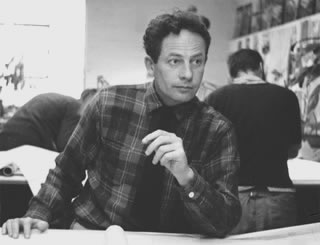Pioneers of Outdoor Living - Page 5
 |
|
|
 |
|
|
4. Lawrence Halprin
Unlike his mentor Tommy Church, Larry Halprin (1916-2009) was not known as a softie. Halprin was very much a self-promoter and emerged among the general public as the best known of California’s early modernist landscape architects.
“Larry was a powerful man, and he had a powerful ego,” Maggie Baylis recalled.
It’s not surprising that Halprin’s most characteristic material is an immense boulder.
The Halprin boulder can be seen throughout his career, from his early landscape design for the low-income Easter Hill housing in Richmond through United Nations Plaza, Levi’s Plaza, and Stern Grove in San Francisco.
He even tried to insert a rock into his and Tommy Church’s now-iconic residential Donnell Garden in Sonoma County from 1948, famous for its trend-setting amoeba-shaped swimming pool with a curving and climbable biomorphic sculpture of concrete in the middle.
Halprin, who helped design the landscape while working for Church’s office, originally proposed a boulder in the center of the pool. Tommy said no. It would be a hazard for swimmers.
Halprin, who opened his own firm in 1949, did hundreds of residential gardens, and in the late 1950s designed the landscaping of Greenwood Common, a neighborhood of custom-designed modern homes in the Berkeley Hills.
Some of his designs preserved portions of the site in a natural state, to save water and celebrate the California environment. Like the work of his compatriots, Halprin’s early designs were influenced by artists. He cited the work of the Surrealist Joan Miro.
In later years Halprin became known for such major projects as the redesign of Market Street in San Francisco; the Sea Ranch along the Sonoma Coast, which nestled a community of modern houses into the rugged coastal landscape; Ghirardelli Square in San Francisco; and the FDR Memorial in Washington D.C.
Halprin, who said he sought to “change the political power structure in the world,” thought his profession was the way to do it.
“Landscape architecture deals with things that are so important,” he said. “It's partly nature, it's partly culture, it's partly social—it's all of these.”




